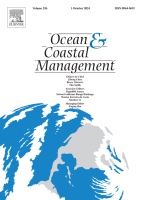Publication: « Conceptualization of territorial resilience potential indicators to coastal hazards through the use of unmanned aerial vehicles »
Jérémy Jessin, Charlotte Heinzlef, Nathalie Long, Damien Serre. Conceptualization of territorial resilience potential indicators to coastal hazards through the use of unmanned aerial vehicles. Ocean and Coastal Management, 2024, 257, pp.107350. ⟨10.1016/j.ocecoaman.2024.107350⟩. ⟨hal-04692591⟩

Major natural hazards in recent decades have led to a revisiting of the concept of resilience, particularly in order to analyze traditional models of response to an unforeseen event and post-crisis management mechanisms. For resilience to be an applicable/operational concept to guide management and inform decisions, it must ultimately be characterized for its assessment. This assessment can be done through the identification of indicators specifically contextualized to the study site and object of study. However, today, operationalizing of the concept of resilience tends to draw on annual censuses or aggregated data, providing a generalized large scale view of the territorial resilience potential. The objective of this study is to identify a table of Territorial Resilience Potential (TRP) indicators to coastal hazards applied to coastal island territories, supplied by data from Unmanned Aerial Vehicles (UAVs) to allow for rapid and site specific data acquisition for repetitive surveys. This acquisition method makes it possible to calculate a number of relevant indicators for assessing the resilience potential of coastal areas. In particular, it allows rapid updating of data following major meteorological events and identification of hot and cold spots of resilience potential of a specific study site. To demonstrate the applicability of this method to island territories, the island of Bora Bora in French Polynesia was used as a case study. Finally, these kinds of results can be fed through a spatial decision support system to help decision-makers choose an adaptation and protection strategy in order to move towards resilient territories, over a long period of time.



